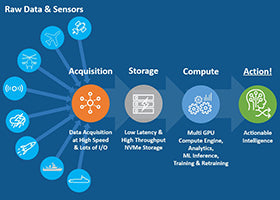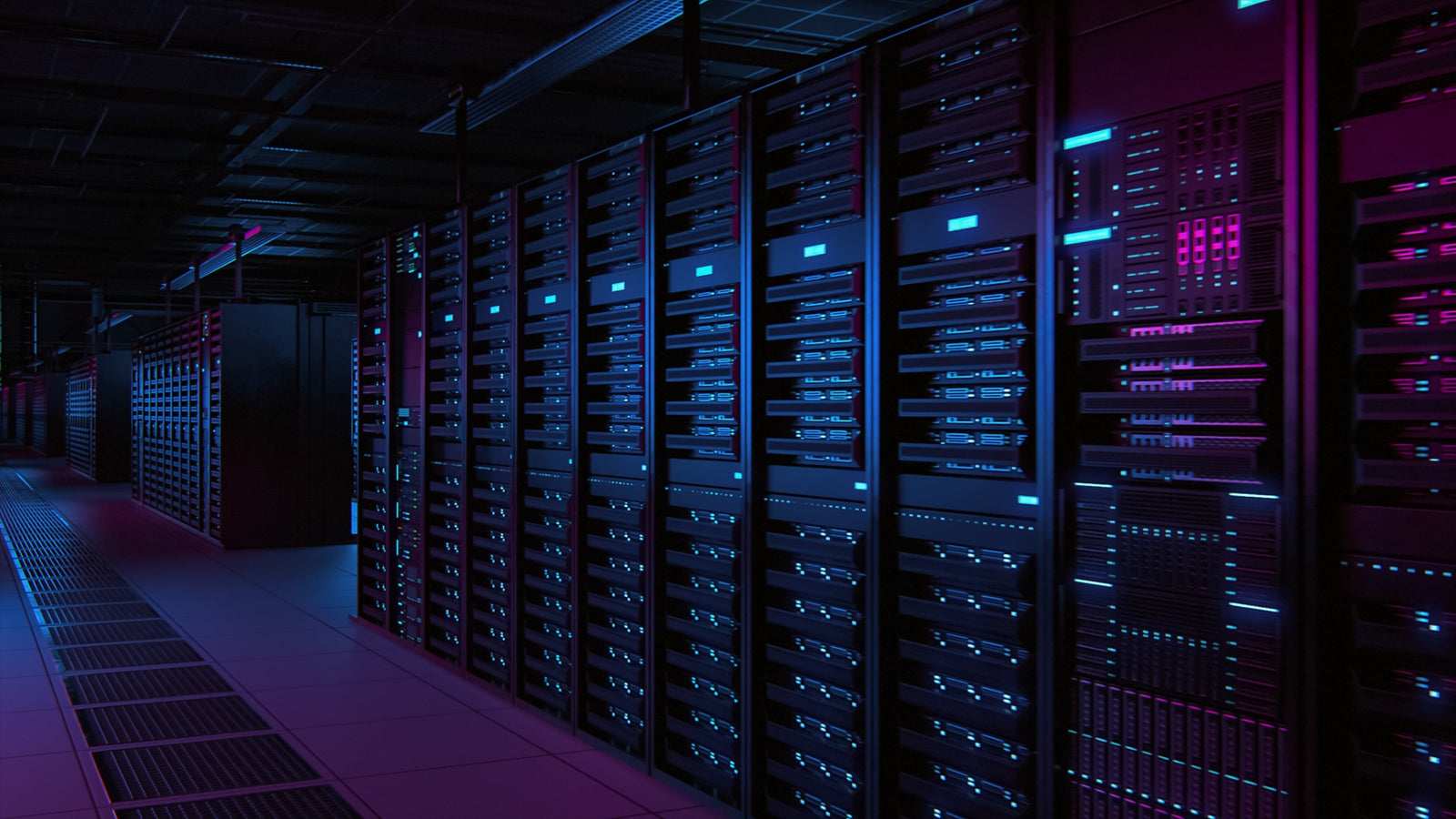
By David Warren-Angelucci, OSS Channel Sales Manager
HPC hardware for AI Workflows on the Edge
The building blocks of an AI workflow are the same as any computational workflow:
While most AI workflows occur in the controlled environment of datacenters where servers have the HPC resources the applications need, many current AI applications require some or all the AI workflow steps to be performed out in the field, in harsh environmental conditions. Until now, companies with applications on the ‘edge’ have had to rely on low-performance hardware or deal with the latency of uploading data to the cloud; rugged edge-computing devices, like industrial PCs and IOT devices, are able to withstand the extreme environmental factors of harsh environments, but they do not come close to offering the same computational performance of servers in a datacenter. Because of this, AI applications on the ‘edge’ have had to compromise on performance, but not anymore!
With our latest line of “AI Transportable” products, One Stop Systems (OSS) supplies rugged appliances which have the same capacity of datacenter performance, but can be used for AI workflows in cars, planes, trucks, ships, drones, and any other environment which has never been able to support HPC hardware…until now. The products in the AI Transportable line are rugged, datacenter-type HPC products that are tailored for each of the four steps in the AI workflow. Companies with edge applications which require the highest performance compute power cannot compromise on performance; they need the components of the datacenter in the field.
With our “AI Transportable” product line, OSS brings the power of the datacenter to the edge!
OSS designs and manufactures high-performance computing systems that are uniquely positioned to support each stage of the AI Transportable workflow, and we have a range of products tailored to meeting the needs of each stage, based on the requirements of the application.
The 4 Stages of the AI Workflow
The ultimate goal of the AI workflow is to process raw data into actionable intelligence. OSS provides hardware platforms which expedite AI workflows and significantly reduce the time to take action.
The four fundamental building blocks of an AI workflow include: gathering raw data from sensors and other I/O devices (OSS has products which acquire significant amounts of data at high-speed), storing that data (OSS has products which support high-density storage in a small footprint), computing that data (OSS specializes in providing multi-GPU platforms for high-speed analytics, inference, AI training, and retraining), and then making intelligent decisions based on the knowledge gained from that data.








 It supports up to four double-wide add-in cards (like a GPU) and has 16 NVMe/SATA SSD bays in two removeable cannisters. The flexibility and utility of this all-in-one server are matched perfectly with its rugged nature for a wide variety of applications that may need more than only storage or only GPU computing.
It supports up to four double-wide add-in cards (like a GPU) and has 16 NVMe/SATA SSD bays in two removeable cannisters. The flexibility and utility of this all-in-one server are matched perfectly with its rugged nature for a wide variety of applications that may need more than only storage or only GPU computing. It may be overkill for many applications, but for those which require the highest performance storage and GPU computing at the edge, this dual-Rigel solution is unmatched.
It may be overkill for many applications, but for those which require the highest performance storage and GPU computing at the edge, this dual-Rigel solution is unmatched.The Future is Now
The push for supporting AI applications in the field is becoming increasingly evident. Companies are no longer able to accept the compromises that they must make by relying on the time-consuming latency of uploading data to the cloud so that it can be stored and computed in a datacenter before results are transferred back to the field, and traditional industrial box PCs are no longer able to support the intense storage & compute requirements of many AI workflows.
One Stop Systems is the solution -- leading the industry in offering rugged HPC solutions of varying scale for edge AI applications.
Click the buttons below to share this blog post!

By: Jaan Mannik – Director of Commercial Sales
The term AI, or Artificial Intelligence, is everywhere nowadays and has quietly woven itself into the fabric of our daily lives. It powers the recommendations we see on streaming platforms, the navigation apps that guide us through traffic, and even the virtual assistants that answer our questions in seconds. From optimizing energy use in smart homes to predicting market shifts in finance, AI has become the invisible engine driving convenience, efficiency, and insight across industries.
In manufacturing, AI-driven robots collaborate with humans to streamline production. In agriculture, machine learning models monitor crops, forecast yields, and conserve resources. Retailers use predictive analytics to anticipate consumer needs before customers even express them. The reach of AI is no longer confined to futuristic labs, it’s in our phones, vehicles, and cities, constantly learning and adapting to serve us better.

OSS PCIe-based products deliver critical advantages for modern military sensor systems by enabling real-time data acquisition, processing, and transmission in rugged, mission-critical environments. These benefits stem from their ability to support high-bandwidth, low-latency interconnects, modular scalability, and environmental resilience, all of which are essential for today’s advanced military platforms.

Companies today are being asked to do more with data than ever before. Bigger AI models, faster insights, and workloads that don’t stay in one place, it’s a lot to keep up with. Traditional infrastructure just isn’t built for this kind of speed and flexibility.
The answer isn’t about throwing more hardware at the problem. It’s about building smarter, more agile infrastructure that adapts as demands change. And that’s where scale-out and increasingly, a blend of scale-out and scale-up come into play.